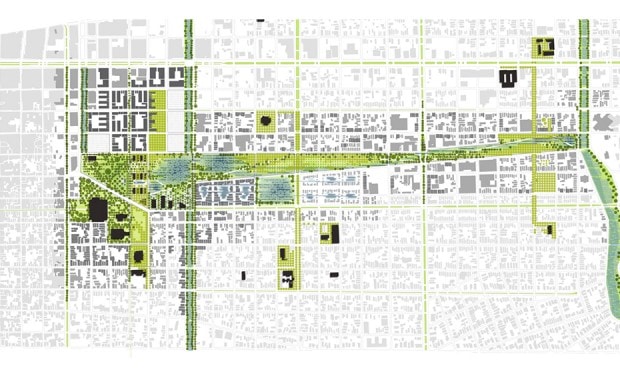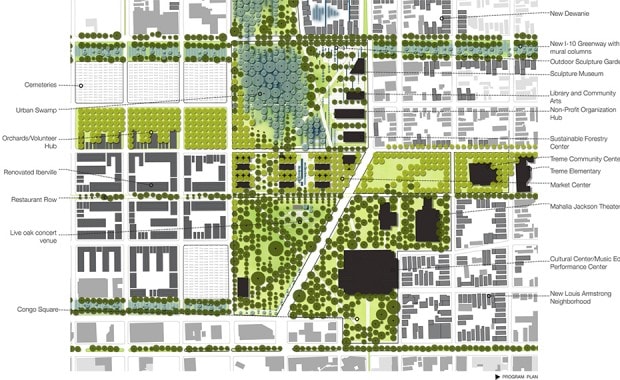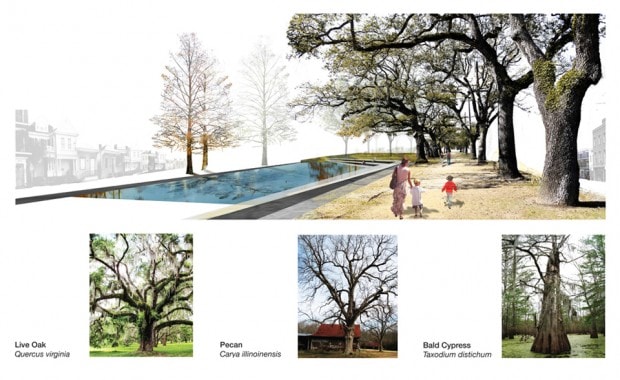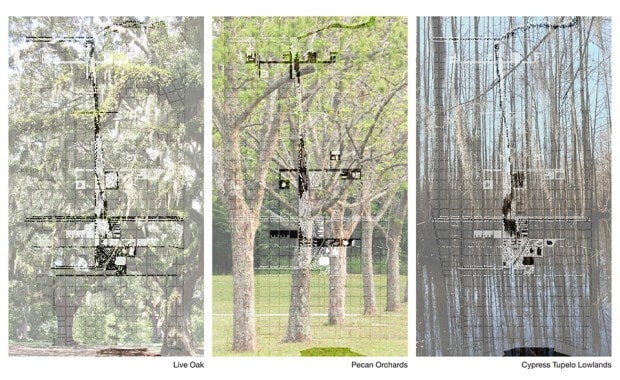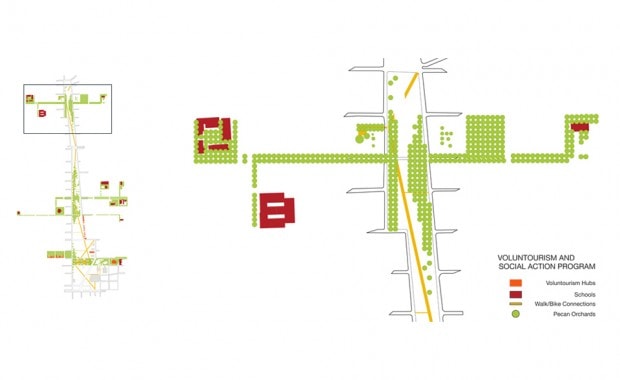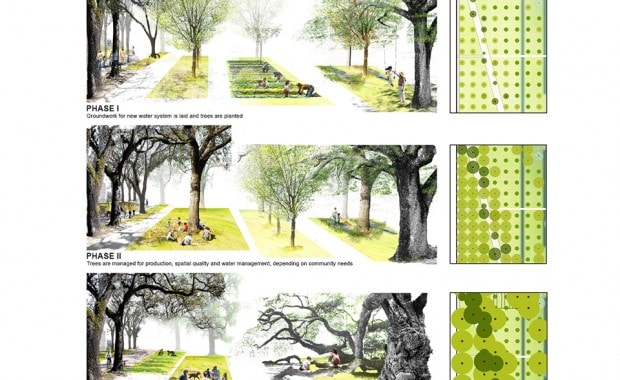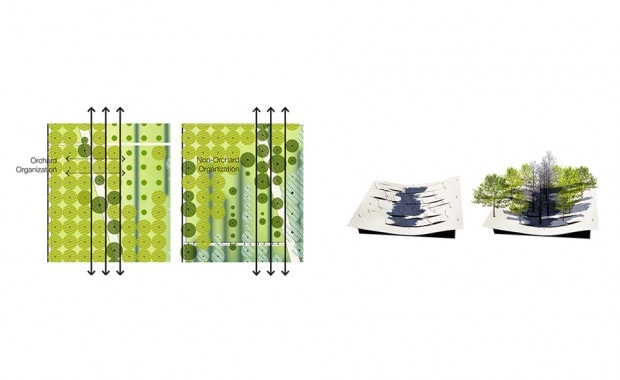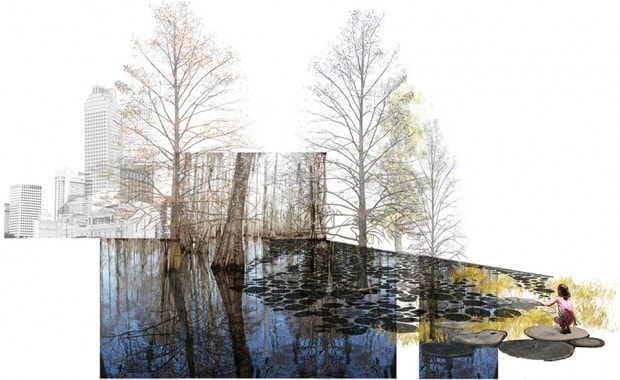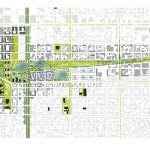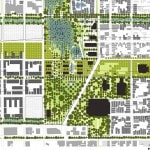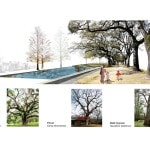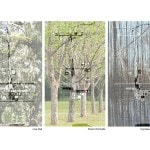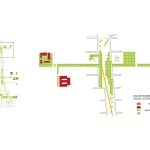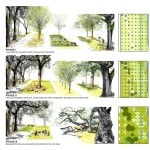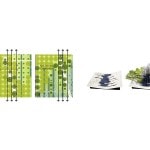Project: Big Old Tree, New Big Easy
Location: New Orleans, LA
Designer: Karen Lutsky
Year: 2010
Program: University of Pennsylvania School of Design
Faculty Advisor: David Governeur, Nicholas Pevzner
Project Description: ‘Big Old Tree, New Big Easy’ is an adaptable design proposal built upon the inherent qualities and capabilities of New Orleans’ native tree species. The project explores the potential of a simple urban afforestation strategy to engage the past, respond to critical current social and infrastructural issues, and support a ‘sustainable’ future.
The strategy begins and ends with the trees. The plan uses well-known attributes of three native tree species (the high-ground live oak, the mid-ground pecan, and the water-loving cypress) to maximize the capacity of the resulting urban canopy to manage water through evapotranspiration, to stabilize the currently sinking ground with extensive root systems, to connect neighborhoods and promote recreation with new shade and structure, to produce valued goods such as nuts and wood, and to harbor and nurture the growth of a strong community.
Maintenance-heavy areas such as orchards and community gardens are located adjacent to schools and community centers. The labor of planting and pruning trees, and harvesting fruit and wood is work that is easily managed, quickly taught, and carried out with accessible training. This allows it to be managed by a volunteer-based, multi-generational workforce without much risk, and lends itself well to larger group participation, promoting communal interaction and engagement. Utilizing the availability of the city’s post-Katrina ‘volun-tourism’ work-force provides an initial source of individuals and communities that value and have experience in collective organization.
As they grow, the trees also begin to engage the community in new ways. Early phasing of tightly planted groves in the project require that trees be thinned out over time. This management practice not only supports the healthy maturation of old-growth trees in the corridor, but also provides a ‘nursery’ source for native trees that may be transplanted into rest of the community, allowing the maintenance of the corridor to continually populate the greater neighborhood with these trees.
The key armature of the proposal is a clear, striated planting plan, in which trees are planted linearly across the site with variation in spacing and species in response to varying ground conditions. This formation creates a planting plan that provides consistency across the landscape, structurally unifying and visually connecting the entirety of the corridor. The responsive planting strategy places water-loving trees on wetter ground, pecan or harvestable trees near schools and local community organizations, and live oaks on high ground and along the main path.
The simplicity of the planting plan also allows the project to continue to function under reduced maintenance. Even if nothing is provided beyond initial planting of the trees and sufficient care to assure their establishment, the trees will still provide the much needed functions of mitigating water, creating habitat, cooling urban climate, increasing the quality of our air, and ensuring another crop of ‘big, old trees’ for the next generation.
Additional Project Information:
2011 National ASLA Honor Award in Analysis and Planning
This project was featured in Scenario 4: Building the Urban Forest
| previous project | next project |
